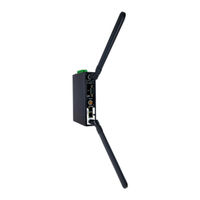User Manuals: Atop SE5201B-DB IoT Gateway
Manuals and User Guides for Atop SE5201B-DB IoT Gateway. We have 1 Atop SE5201B-DB IoT Gateway manual available for free PDF download: User Manual
Atop SE5201B-DB User Manual (105 pages)
Low-Power Wide-Area NB-IoT/Cat. M1/LTE Cat.1 Gateway
Table of Contents
Advertisement
Advertisement
